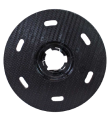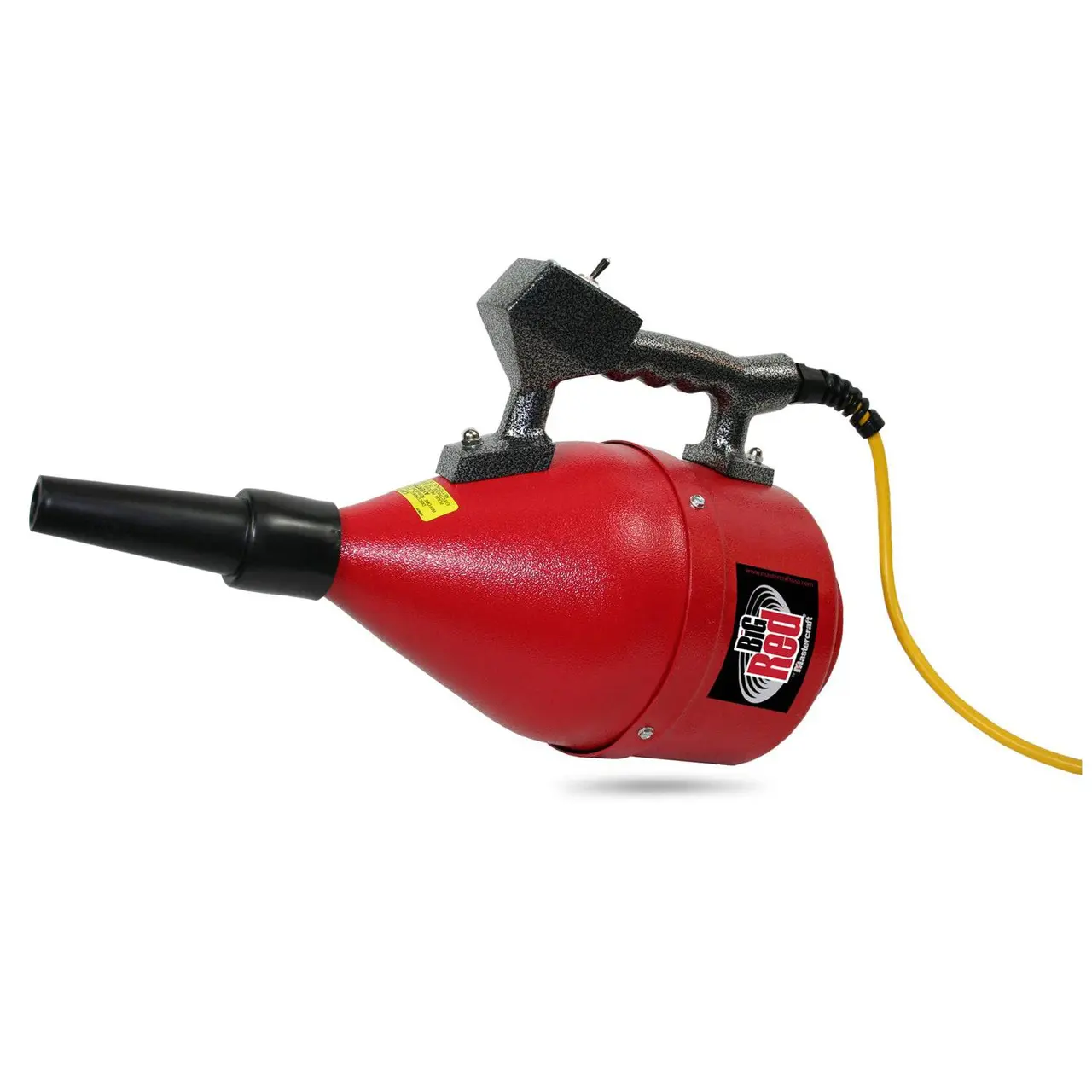In today’s fast-paced industrial environment, maintaining cleanliness is paramount. Air blowers have emerged as indispensable tools for ensuring that facilities stay spotless and safe. Let’s explore why these devices are essential for effective industrial cleaning and how they can simplify the process.
Understanding Air Blowers: The Basics
Air blowers are powerful devices designed to move air at high speed. They are commonly used in various industries to clean machinery, floors, and virtually any surface requiring a quick cleanup. By directing a concentrated stream of air, these tools are able to dislodge dirt and debris that may otherwise take a significant amount of time to remove manually. Understanding how air blowers function and their various applications can greatly enhance your cleaning strategies.
The basic principle behind air blowers lies in their ability to create a difference in air pressure. As air is expelled at high velocity, it creates a suction effect that vacuums up dust and particles. This makes them incredibly effective for cleaning equipment and surfaces that are otherwise hard to reach. Whether it’s a manufacturing plant or a construction site, the versatility of air blowers is what makes them stand out as a valuable asset.
Air blowers come in different types, each designed with specific needs and environments in mind. From handheld models for small jobs to larger, industrial-grade blowers for heavy-duty applications, there is an air blower available to suit virtually every requirement. It’s this range of options that makes them essential tools in the industrial cleaning arsenal.
Key Benefits of Using Air Blowers in Industrial Cleaning
One of the most significant advantages of using air blowers in industrial cleaning is efficiency. Traditional cleaning methods often involve sweeping or wiping surfaces, which can be time-consuming and labor-intensive. Air blowers can quickly clear dust and debris without the need for additional cleaning materials. This speed not only saves time but also increases productivity across the board.
Another key benefit is the reduction of manual labor. Since air blowers require minimal physical effort, employees can focus their attention on other essential tasks. This is particularly valuable in environments that demand high standards of cleanliness, as it allows workers to maintain productivity without sacrificing sanitization.
Moreover, the use of air blowers can also improve safety in the workplace. By minimizing the accumulation of dust and debris, these devices help in reducing potential slip and fall hazards. Additionally, keeping surfaces clean and free of contaminants can contribute to a healthier working environment, which is crucial for employee wellbeing and health.
Lastly, air blowers are environmentally friendly. Unlike chemical cleaning agents, they do not produce waste or require disposal of cleaning materials. This eco-friendly aspect available with most modern air blowers is an added benefit for businesses that prioritize sustainability in their operations.
Types of Air Blowers Suitable for Industrial Use
When it comes to selecting an air blower for industrial applications, there are several types to consider. Each type is tailored for specific tasks and environments, making it crucial to choose the right one for your needs. One common type is the handheld air blower, which is lightweight and easy to maneuver. This type is perfect for quick jobs or smaller areas where logistics allow for rapid deployment.
On the other end of the spectrum, you have the backpack air blower. This model offers greater mobility and is ideal for larger spaces, such as outdoor sites or expansive industrial complexes. The design allows users to wear the blower on their backs, enabling them to move freely while effectively clearing debris and dust without excessive fatigue.
Lastly, there are industrial-grade blowers that provide high power and larger air capacity. These are typically suited for heavy-duty jobs in environments like construction sites, factories, or even warehouses. These blowers can handle significant amounts of debris, making them essential for maintaining cleanliness in high-traffic areas. Understanding the different types of air blowers available ensures that you can select the best equipment for your particular industrial cleaning needs.
How to Choose the Right Air Blower for Your Needs
Choosing the right air blower involves considering several factors, starting with the type of tasks you plan to use it for. If your cleaning jobs are primarily light-duty, a handheld model may suffice. However, for larger tasks that require greater mobility and power, investing in a backpack air blower or industrial-grade model can yield better results and save time.
Another important aspect to consider is air volume and speed, which determine how effective the blower will be at dislodging dirt and debris. Look for blowers with adjustable air speeds, as this feature allows you to customize the airflow based on the specific task at hand. A blower that can adapt to various cleaning demands is far more versatile and valuable.
Durability is yet another key factor. In industrial settings, equipment faces significant wear and tear. Investing in a high-quality, robust air blower constructed with durable materials will ensure it stands the test of time. This could potentially save you money in the long run, as reliable equipment typically requires fewer repairs and replacements.
Lastly, don’t overlook the importance of ergonomics. A well-designed air blower should be comfortable to use for extended periods, minimizing the risk of strain or injury to the operator. Features such as padded handles, lightweight construction, and adjustable components can significantly enhance the user experience and make the cleaning tasks more manageable.
Best Practices for Operating Air Blowers Safely
Operating air blowers safely is paramount to both user effectiveness and workplace safety. First, it’s essential to don proper personal protective equipment (PPE). This includes eye protection to guard against floating debris and hearing protection for compensating for the loud noise that air blowers can produce.
Moreover, understanding the airflow direction is crucial when using air blowers. Always aim the blower away from other individuals, machinery, or precariously positioned items to prevent injuries or accidents. Being mindful of your environment during operation promotes not only safety but also overall efficiency in your cleaning processes.
Regular maintenance is also necessary to ensure the blower operates safely and effectively. This includes checking the air filter, inspecting the hose and connections for wear, and cleaning the unit regularly. Keeping the air blower in top working condition prolongs its life and minimizes safety risks.
Lastly, it’s wise to familiarize yourself with the manufacturer’s instructions and recommended operating procedures. Following guidelines ensures proper usage and significantly reduces the potential for accidents. Awareness and compliance to established norms create a safe and productive work environment.
Big Red Hand Blower by Mastercraft®
Introducing the Big Red Hand Blower by Mastercraft®, a powerful and versatile tool designed to tackle all your ventilation and drying needs. When it comes to air blowers, this machine stands out for its efficiency, compact design, and robust performance. Whether you’re dealing with construction sites, warehouses, or cleanup operations, the Big Red Hand Blower delivers impressive airflow, making it an essential addition to your toolkit. With durable construction and ease of use, it’s perfect for professionals looking for a reliable solution in a wide range of demanding environments.
Real-Life Case Studies: Air Blowers in Action
Consider a large manufacturing plant that struggled with dust control on a regular basis. Workers spent hours every week cleaning surfaces to maintain air quality. After investing in several industrial air blowers, they significantly reduced cleaning time by upwards of 60%. The company not only improved workplace hygiene but also increased overall productivity, allowing workers to focus on their core tasks rather than routine cleaning.
Similarly, a local construction site faced setbacks due to debris accumulation that interfered with daily operations. By implementing backpack air blowers, the cleanup team was able to clear workspaces within minutes, leading to fewer delays and enhanced safety. Workers could navigate the site more freely, reducing the risk of accidents caused by tripping over scattered materials.
These case studies illustrate the transformative impact that air blowers can have in various industrial settings. By adopting these powerful tools, businesses can pivot towards improved cleaning efficiency and safety, ultimately leading to a more conducive work environment.
Final Thoughts on the Importance of Air Blowers in Industrial Settings
Air blowers play a crucial role in industrial cleaning by providing efficiency, versatility, and safety. Their ability to remove dust, debris, and contaminants quickly makes them a must-have for any industrial setting. By investing in the right air blower, businesses can enhance their cleaning operations and maintain a healthier work environment.















